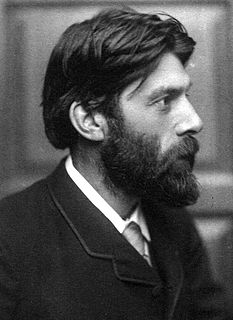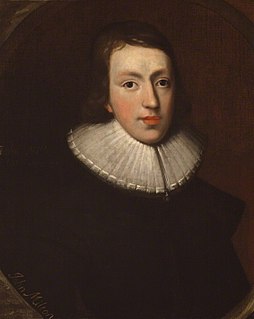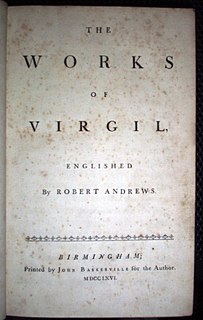Lines where the number of syllables is not ten
Bridges describes the cases where there are:
- fewer than 10 syllables
- more than 10 syllables
He notes that there are no examples in Paradise Lost of a line having fewer than ten syllables, other than X.827 as it appeared in the first edition. It was corrected to a ten syllable line in the 1674 edition. He also notes that Milton would have been aware of Chaucer's practice of omitting the first unaccented syllable on rare occasions.

Geoffrey Chaucer was an English poet and author. Widely considered the greatest English poet of the Middle Ages, he is best known for The Canterbury Tales. Chaucer is known as the "Father of English literature", and he was the first writer to be buried in Poets' Corner of Westminster Abbey.
The section on where there are more than ten syllables in a line is mainly taken up with a detailed description of elision; see Robert Bridges' theory of elision for more details of this. He does categorize lines with extra syllables thus:
In linguistics, an elision or deletion is the omission of one or more sounds in a word or phrase. The word elision is frequently used in linguistic description of living languages, and deletion is often used in historical linguistics for a historical sound change.
Robert Bridges' theory of elision is a theory of elision developed by the poet Robert Bridges, while he was working on a prosodic analysis of John Milton's poems Paradise Lost, Paradise Regained, and Samson Agonistes. Bridges describes his theory in thorough detail in his 1921 book Milton's Prosody. With his definition of poetic elision, Bridges is able to demonstrate that no line in Paradise Lost contains an extra unmetrical syllable mid-line; that is, any apparent extra mid-line syllable can be explained as an example of Bridges' elision.
- lines with an extra syllable (or syllables) at the end
- lines with an extra syllable mid-line
This is the standard feminine ending, where there is an extra unstressed syllable at the end. Bridges cites two examples of where there are two extra unstressed syllables at the end of the line, the final 'foot' being 'no satietie' (VIII.216) and 'best societie' (IX.249), although he suggests that these could be counted as a single extra syllable by means of elision.
Masculine ending and feminine ending are terms used in prosody, the study of verse form. "Masculine ending" refers to a line ending in a stressed syllable. "Feminine ending" is its opposite, describing a line ending in a stressless syllable. This definition is applicable in most cases; see below, however, for a more refined characterization.
Bridges notes that in Milton's earlier work, such as Comus , Milton had permitted the use of the feminine ending, mid-line, directly preceding a caesura, (as had Shakespeare). Here is an example:
- Root-bound, that fled Apollo. Fool do not boast — (Comus, 662)
However, Bridges holds that in Paradise Lost there are no examples of this. Lines such as:
- Of high collateral glorie: him Thrones and Powers (P.L. X.86)
he treats as a ten syllable line by virtue of elision.

Alexandrine is a name used for several distinct types of verse line with related metrical structures, most of which are ultimately derived from the classical French alexandrine. The line's name derives from its use in the Medieval French Roman d'Alexandre of 1170, although it had already been used several decades earlier in Le Pèlerinage de Charlemagne. The foundation of most alexandrines consists of two hemistichs (half-lines) of six syllables each, separated by a caesura :
o o o o o o | o o o o o o
o=any syllable; |=caesura
In poetry, metre (British) or meter is the basic rhythmic structure of a verse or lines in verse. Many traditional verse forms prescribe a specific verse metre, or a certain set of metres alternating in a particular order. The study and the actual use of metres and forms of versification are both known as prosody.
In poetic metre, a trochee, choree, or choreus, is a metrical foot consisting of a stressed syllable followed by an unstressed one, in English, or a heavy syllable followed by a light one in Latin or Greek. In this respect, a trochee is the reverse of an iamb.
The foot is the basic repeating rhythmic unit that forms part of a line of verse in most Indo-European traditions of poetry, including English accentual-syllabic verse and the quantitative meter of classical ancient Greek and Latin poetry. The unit is composed of syllables, and is usually two, three, or four syllables in length. The most common feet in English are the iamb, trochee, dactyl, and anapest. The foot might be compared to a bar in musical notation.
A caesura, also written cæsura and cesura, is a break in a verse where one phrase ends and the following phrase begins. It may be a comma, a tick, or two lines, either slashed (//) or upright (||). In time value this break may vary between the slightest perception of silence all the way up to a full pause. Considered a breath, a caesura in music represents a similar break or pause. The length of a caesura where notated is at the discretion of the conductor. In choral works a brief caesura may be notated where singers are to catch their breath.

In prosody, alliterative verse is a form of verse that uses alliteration as the principal ornamental device to help indicate the underlying metrical structure, as opposed to other devices such as rhyme. The most commonly studied traditions of alliterative verse are those found in the oldest literature of the Germanic languages, where scholars use the term 'alliterative poetry' rather broadly to indicate a tradition which not only shares alliteration as its primary ornament but also certain metrical characteristics. The Old English epic Beowulf, as well as most other Old English poetry, the Old High German Muspilli, the Old Saxon Heliand, the Old Norse Poetic Edda, and many Middle English poems such as Piers Plowman, Sir Gawain and the Green Knight, and the Alliterative Morte Arthur all use alliterative verse.
Syllabic verse is a poetic form having a fixed or constrained number of syllables per line, while stress, quantity, or tone play a distinctly secondary role — or no role at all — in the verse structure. It is common in languages that are syllable-timed, such as Japanese or modern French or Finnish — as opposed to stress-timed languages such as English, in which accentual verse and accentual-syllabic verse are more common.
Accentual verse has a fixed number of stresses per line regardless of the number of syllables that are present. It is common in languages that are stress-timed, such as English, as opposed to syllabic verse which is common in syllable-timed languages, such as French.
Scansion, or a system of scansion, is the method or practice of determining and (usually) graphically representing the metrical pattern of a line of verse. In classical poetry, these patterns are based on the different lengths of each syllable, and in English poetry, they are based on the different levels of stress placed on each syllable. In both cases, the meter often has a regular foot. Over the years, many different systems have been established to mark the scansion of a poem.
Decasyllable is a poetic meter of ten syllables used in poetic traditions of syllabic verse. In languages with a stress accent, it is the equivalent of pentameter with iambs or trochees.
In the analysis of poetic meter, weak position is either of two things:
Milton's Prosody, with a chapter on Accentual Verse and Notes is a book by Robert Bridges. It was first published by Oxford University Press in 1889, and a final revised edition was published in 1921.
In his book Milton's Prosody, Robert Bridges continues his detailed analysis of the prosody of John Milton's Paradise Lost, by looking at the changes in Milton's practice with his later poems Paradise Regained and Samson Agonistes.
Accentual-syllabic verse is an extension of accentual verse which fixes both the number of stresses and syllables within a line or stanza. Accentual-syllabic verse is highly regular and therefore easily scannable. Usually, either one metrical foot, or a specific pattern of metrical feet, is used throughout the entire poem; thus we can talk about a poem being in, for example, iambic pentameter. Poets naturally vary the rhythm of their lines, using devices such as inversion, elision, masculine and feminine endings, the caesura, using secondary stress, the addition of extra-metrical syllables, or the omission of syllables, the substitution of one foot for another.
The book Notes on Prosody by polyglot author Vladimir Nabokov compares differences in iambic verse in the English and Russian languages, and highlights the effect of relative word length in the two languages on rhythm. Nabokov also proposes an approach for scanning patterns of accent which interact with syllabic stress in iambic verse. Originally Appendix 2 to his Commentary accompanying his translation of Aleksandr Pushkin's Eugene Onegin, Notes on Prosody was released separately in book form.
The following outline is provided as an overview of and introduction to poetry:
Latin prosody is the study of Latin poetry and its laws of meter. The following article provides an overview of those laws as practised by Latin poets in the late Roman Republic and early Roman Empire, with verses by Catullus, Horace, Virgil and Ovid as models. Except for the early Saturnian poetry, which may have been accentual, Latin poets borrowed all their verse forms from the Greeks, despite significant differences between the two languages.






